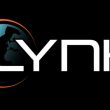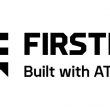Batteries forever, fuel cells next year
If it’s portable and electronic, it needs batteries. One of the byproducts of the silicon revolution has been the steadily growing appetite for portable power for GPS receivers, personal digital assistants, and other mobile devices. And, despite the best efforts of engineers around the globe to come up with a better mousetrap, the humble battery will be around for a while — it’s a very mature technology with more than 100 years of successful application.
However, batteries aren’t perfect. Sooner or later, they need to be replaced or recharged. Because it typically takes hours to recharge a totally drained battery, radio manufacturers are incorporating techniques to stretch power lifecycles. For example, RELM Wireless’s Project 25-compliant DPH line of VHF radios is capable of operating between 20 to 30 hours by using a high-capacity NiMH battery and switching on several power-save features.
“When we developed the [DPH] radio, we borrowed from our existing low-current technology,” said Jim Spence, RELM’s executive vice president of engineering. “The components have been honed for the cell-phone market, so they are extremely low current.” A programmable battery-save mode powers the radio off, except for a “listen” mode that activates a couple of times per second to detect incoming traffic.
Another option is fuel cells, which offer clear advantages over batteries, according to Gregg Makuch, director of marketing for Neah Power Systems.
“The real difference is that the relationship between a battery and runtime is linear, whereas with a fuel cell, it is non-linear,” Makuch said. “You carry five batteries for five times the run time. Or, you can carry a single fuel cell and a couple of cartridges, each half the size of a lithium battery — [they’re] smaller, lighter, and [you] can pop them in and out instantly.”
While a few manufacturers have promised small fuel cells by the end of 2004, industry analysts think it will be somewhat longer.
“Safely speaking, I would say mid-2005,” said Sara Bradford, industry manager, power supplies and batteries group, at Frost & Sullivan. “Toshiba just delayed its [product] delivery until then. … As this race is volatile and completely depends on beta testing prototypes, I cannot say who will come out first.”
Frost & Sullivan research estimates the market for fuel cells for use in mobile devices could reach as high as 10 million units by 2010. In contrast, the rechargeable battery market for the same devices is expected to be 1.79 billion units.
A typical micro fuel cell uses methanol, an alcohol-based fuel that can be made from a variety of materials, including garbage, trees, and seaweed, though most methanol is made from natural gas. A quarter of the world’s supply of methanol is produced at 18 plants in the United States, where more than 2.5 billion gallons are processed annually, according to the Methanol Institute.
Power in a methanol fuel cell is generated by passing a methanol/water solution along with oxygen from the surrounding air across a thin proton exchange membrane (PEM) — covered with a thin layer of platinum-based catalyst — between two electrodes. The resulting chemical reaction across the membrane breaks down the methanol, generating electricity along with water vapor and carbon dioxide as byproducts. Manufacturers have demonstrated fuel-cell prototypes that use from 3% to 30% methanol, with plans to try to boost concentrations up to 40% to 60% in the future. Higher concentrations provide more power but also create the challenge of manufacturing a membrane that operates efficiently without letting too much methanol seep through the membrane too quickly.
MTI MicroFuel Cells has a very ambitious agenda with programs targeted at the military and consumer electronics markets. MTI’s star product is a replacement for the military’s standard BA 5590 disposable lithium battery. Using the company’s proprietary technology, prototypes have been demonstrated that operate on fuel consisting of 50% methanol, with an ultimate goal of operating on 100% methanol.
In November 2003, MTI announced an agreement with Harris Corporation to integrate the fuel cell with Harris radios as a direct replacement for the battery or as a battery recharger. The company also has entered into an exclusive, multi-year partnership with Gillette and its Duracell battery division for the development of a fuel-cell system and refills for “high-volume consumer markets.” MTI Micro will build the actual fuel cell system, while Duracell will be responsible for fuel cartridge refills. Gillette has invested $1 million with an option to invest up to $4 million more if certain performance milestones relating to power output and weight are met.
Meanwhile, Neah Power Systems is taking a creative approach to fuel cell development, using etched silicon as the structural membrane material to create more surface area for reactions to take place.
“Silicon is a very durable and stable material and isn’t going to break down with higher concentrations of fuel and oxidant,” Makuch said.
Neah anticipates shipping its first fuel cells to power PCs in late 2005 or early 2006.The company will use a closed-loop cartridge that includes an oxygen source in the form of hydrogen peroxide and captures waste water vapor and carbon dioxide in the cartridge, enabling it to be operated in harsher environments. First generation PEM designs intake air to provide oxygen for reactions and vent water vapor and carbon dioxide — two paths where unwanted material such as dust and excess water can enter and interfere with the cell’s operation.
“In volume production, we expect these cartridges to cost a couple dollars per cartridge or less, depending on the size and application,” Makuch said. “The good news is that the core ingredients are relatively inexpensive — methanol is 50 cents a gallon. Plus, mass production seems feasible — heck, Bic produces 4 million lighters a day.”

















